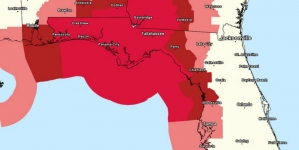-
Tips for becoming a good boxer - November 6, 2020
-
7 expert tips for making your hens night a memorable one - November 6, 2020
-
5 reasons to host your Christmas party on a cruise boat - November 6, 2020
-
What to do when you’re charged with a crime - November 6, 2020
-
Should you get one or multiple dogs? Here’s all you need to know - November 3, 2020
-
A Guide: How to Build Your Very Own Magic Mirror - February 14, 2019
-
Our Top Inspirational Baseball Stars - November 24, 2018
-
Five Tech Tools That Will Help You Turn Your Blog into a Business - November 24, 2018
-
How to Indulge on Vacation without Expanding Your Waist - November 9, 2018
-
5 Strategies for Businesses to Appeal to Today’s Increasingly Mobile-Crazed Customers - November 9, 2018
This GIF illustrates global warming ‘spiraling’ out of control
The animation he made has received a lot of attention both at the University of Reading in the United Kingdom, where he works as a professor, and on Twitter.
Advertisement
What does climate change look like?
“I wanted to try and visualize the changes we’ve seen in different ways to learn about how we might improve our communication”, Hawkins told Tech Insider by email. Using HadCRUT4.4 temperature data from the past 166 years, the unique animated chart does a great job of showing the rate at which global temperatures have increased over the past century and a half. A fellow researcher at the University of Oslo, Jan Fuglestvedt, gave him the idea of a spiral.
Ed Hawkins, a climate scientist in the National Centre for Atmospheric Science at the University of Reading, used data from the Met Office Hadley Centre to show how rapidly the global temperature has risen in the past few decades.
The image has resonated for a number of reasons – one of them being, as Hawkins says, that it “doesn’t require any complex interpretation”. Some climatologists believe that rising temperatures need to be limited even further – to 2.7 degrees Fahrenheit (1.5 degrees Celsius) – in order to prevent serious damage to the environment. It targeted slowing down the rise in greenhouse gases, to “well below” 2 degrees Celsius (3.6 degrees F), compared to pre-industrial levels, by 2100.
Hawkins said that the new animation showed the link between the current global temperatures and the desired target. The first is that from the 1950s through the 1970s, scientists believe that sulfate aerosols from air pollution helped counter the warming effects of carbon dioxide and keep the planet, temporarily, cooler than it might have been otherwise.
While the last couple of years have set a record for the “warmest year” on record, 2016 is gearing up to exceed the record.
Advertisement
El Niño event has served as a small push to the record-setting temperatures in 1998 and in 2016. Granted, we wouldn’t actually be fully there until the average temperature stayed at that level – a brief excursion across the red line wouldn’t cut it.




























